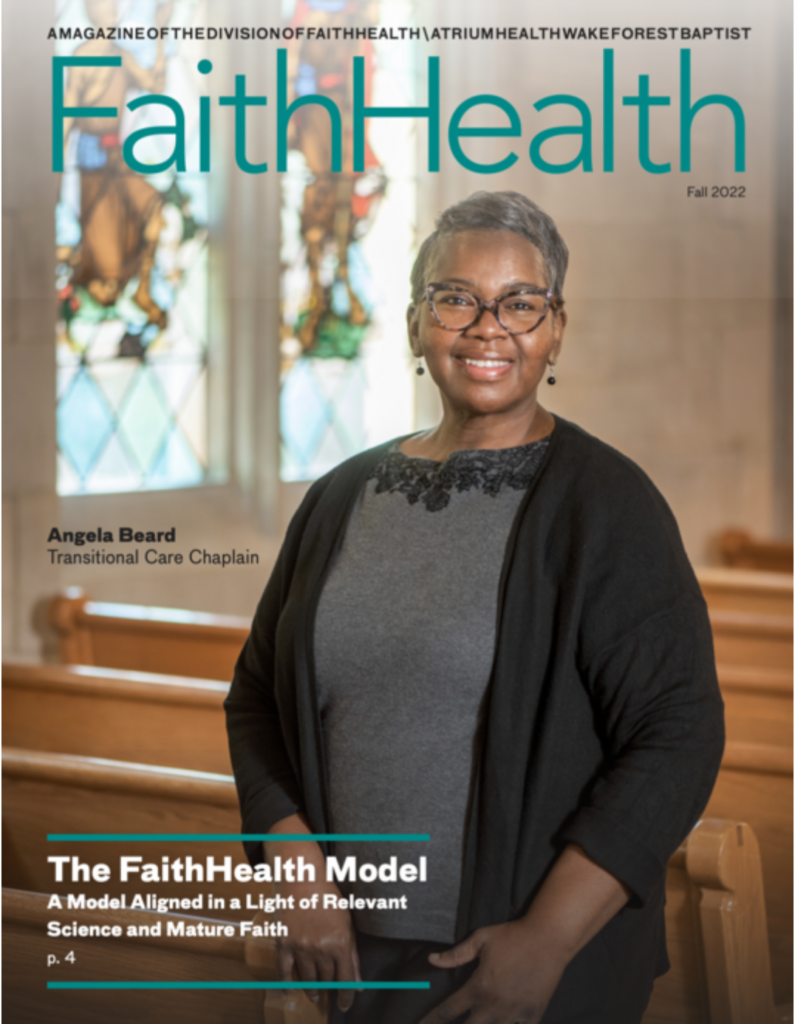By Gary Gunderson
In about three months we’ll be in a new world. Whether our president elect is Mr. Trump or Secretary Clinton everyone in a position of public responsibility will find themselves in a bruised and disoriented body politic. From the new President to every elected official in every county and town, to every public health official, to every law enforcement officer, and to the many other public roles in institutions such as hospitals, companies, press and religious leadership, the question will be, “What do we do with ourselves?”
At the moment all the focus is on winning elections. But after the election we will likely continue to have a deeply divided body. One part will be almost incomprehensible to the other, like symbiotic twins of different species unable to find any words or gestures that are not interpreted as hostile.
How do we live together after the election?
This is why we need to shift our attention to finding a way to live together afterward. Nobody has a bigger stake in this—or is in a better position to do something useful—than those of us in the work of health, prevention, public health, healthcare systems. In gross financial terms, we are more than a trillion dollars of the economy, with millions of people working as nurses, janitors, researchers, doctors and the whole panoply of roles across our thousands of institutions.
 There is hardly any place more diverse in faith and politics than inside one of our institutions, so we don’t have to go looking for someone who doesn’t agree with us. And the nature of our work puts us in the midst of the most profound moments of hope (birth!) and shock and sorrow of the human journey. We don’t just see the traumas, but we also witness the slow predictable grinding of poverty and the brokenness that passes from one generation to the next.
There is hardly any place more diverse in faith and politics than inside one of our institutions, so we don’t have to go looking for someone who doesn’t agree with us. And the nature of our work puts us in the midst of the most profound moments of hope (birth!) and shock and sorrow of the human journey. We don’t just see the traumas, but we also witness the slow predictable grinding of poverty and the brokenness that passes from one generation to the next.
As health organizations we find ourselves right in the middle of the most contentious public policy issues. All of the third-rail issues run right through our buildings. We care for the undocumented immigrants (of course, we do) and the beat up women, and the veterans with all the wounds you can’t see. We see the eyes of those who can hardly recognize themselves because of addictions and dependencies. We treat the victims, whoever they are, of gunshot wounds. We know those who are surprised by vulnerabilities of age and the scattered nature of the 21st century family. Those of us in public health know the streets where all these people patterns live. We ache with the knowledge of how much of the suffering could be prevented or buffered.
We know a lot about bruised and broken people. Now we also need to focus on our role in a bruised and broken body politic. To heal that body requires a new humility in our language and in our work.
Haidt: the righteous mind
Gene Matthews, now faculty at UNC School of Public Health, spent many years as the General Counsel for the Centers for Disease Control, many of them working for Dr. Bill Foege. I also worked for Bill at The Carter Center so when I came to North Carolina a few years ago Gene reached out to me. We have found ourselves in a surprising and common work inspired by the writing of Jonathan Haidt and his recent book The Righteous Mind: Why Good People are Divided by Politics and Religion. Haidt shines a bright light on how to have healthier public dialogue about the things that matter most.
A professor of moral psychology, Haidt says there are six “moral intuitions” that function like taste buds for all people. Liberals (my people) tend to have a taste for caring and fairness (meaning equality) which we prefer with a touch of liberty. The broader conservative pallete includes caring and fairness (to the surprise of liberals). Conservatives have an equal taste for the virtues of liberty and loyalty, respect for authority and “sanctity.” This last one is not just religiosity, but a sense that some things are sacred and deserve protection. Haidt argues that conservatives—and conservative political movements—have an advantage in that they can appeal to all six, while liberals aren’t even trying on three of them.
Haidt argues that we are prewired for righteousness so deeply that we can sense these six moral flavors intuitively long before we shape logical moral arguments. Basic to how we form highly complex social bodies, this goes far beyond the simple ties of blood and clan. It’s also how we can map the pattern of traumatizing bruises that mark our body politic today. And this is how we can see the urgent need for humility by which we can create a new pattern of deep listening and dialogue about the things that matter most. Haidt begins and ends his remarkable book by quoting Rodney King’s immortal question, “Can we all get along?” Less quoted, but not overlooked by Haidt, was King’s follow-up counsel: “We’re all stuck here for a while, so let’s try to work it out.”
 Words are not enough
Words are not enough
Some think the only common language is money, what things cost and who should pay. Most of my adult life I’ve watched even churches subject to the cold hand of economics squeeze the air out of otherwise rational discussion: “Be realistic and act like a business.” Health organizations often succumb to this even though our daily life is filled with evidence that when life hangs in the balance, money often matters the least. What we actually have in common is the human journey of health, frailty, dependence, pain and the fear of pain, loss and the fear of loss. What we actually know is how our life is shaped by those we share it with, those who care despite all boundaries of blood and coin. This is why those of us in the health fields, including the massive number of community and faith partners, are in such a profoundly key role in this moment when our body politic suffers so deeply.
Health people know that words are not enough. Words are not even the beginning and they are hardly important at the end. We may need Haidt’s counsel to talk among ourselves now and again when we have the chance to explain ourselves in public. But most of the time our eloquence is quiet. We keep our doors open to anyone all day and night. Despite the fabulously expensive technology and training of thousands of staff, non-profits and faith health systems give away tens of millions of dollars of care every year on purpose. We are required to do so as part of public trust, but most of us go well beyond the minimum bar. This passive waiting in readiness is part of the glue that holds society together, that defines us as a moral people. It is good, indeed very good. But it is not enough for this broken moment. For we know we can be proactive with our mercy; we need not wait. We know better.
The social body, bruised but resilient
Our new book Stakeholder Health: Insights from the New Systems of Health looks like a kind of textbook based on our collaborative learning; and it is. I expect dozens of courses to use it in the next few years (TC and I will be teaching one ourselves at Wake). But more than a textbook, it is a collaborative witness that is map for healing out social body. Its 44 authors wrote about the social drivers that shape the health of people and neighborhoods. They wrote of population health as the common ground for those professing public health and those running healthcare organizations and hospitals. The book did not quite say the obvious and most profound thing. The social body itself is bruised, but resilient. The social body itself is defined by biological, psychological, social and spirit aspects, inseparable as the facets of an emerald. The social body itself cries out for the practical, on-the-streets intelligent love found in the daily walk of community health workers. The social body itself thrives when generosity is humble and smart.
 This generosity is happening all over the nation and world. The wild organic sprawling work of the Stakeholder Health collaborators hits on all six of Haidt’s cylinders. And there is not a syllable in the book that you could not go and see tomorrow morning. We were describing, not imagining.
This generosity is happening all over the nation and world. The wild organic sprawling work of the Stakeholder Health collaborators hits on all six of Haidt’s cylinders. And there is not a syllable in the book that you could not go and see tomorrow morning. We were describing, not imagining.
Even in fractured North Carolina the body politic is healing even as it continues to pile on the political bruises. Here, we see an astonishing amount of serious collaboration quietly crossing over all the supposedly impossibly treacherous chasms. Competing hospitals are sharing data and teaching each other about how to come alongside the poor. Black, white, liberal and conservative Baptists are working together on the meanest streets—some paved, some not. Republican sheriffs and liberal Hispanic activists are quietly helping each other keep faith with all six of Haidt’s moral intuitions. This is happening precisely because a bit of humility and openness to the possible decency of different kinds of people becomes real when the dialogue is about real people.
Haidt would ask us to describe our work and witness not just in the liberal flavors of care and fairness (as we usually do). But to embrace a more robust and compelling witness that resonates with the broader values that honor the sense of loyalty so typical of healthcare teams, the sense of respect for authority of many kinds that govern the practice of medicine and public health.
And we should claim in humility our deepest intuition that our work is sacred because we humble ourselves before the ultimate human mystery of life and death and the life of the common body that goes on beyond us all.

